Motya
Q962184Motya: Phoenician city on an island in the west of Sicily, modern Mozia.

The Phoenician town Motya, founded in the eighth century BCE as a commercial center, is situated on a small island in a lagoon on the most western part of Sicily. Situated on an island that is about two kilometers long and wide, and measures about 45 hectare, Motya could only be reached by boat, although the inhabitants of Motya constructed a remarkable paved road at the bottom of the lagoon, by which chariots with large wheels could reach the town. The first picture shows the island on a map of the siege of Lilybaeum (modern Marsala) during the First Punic War (264-241), in which the Romans conquered Sicily.
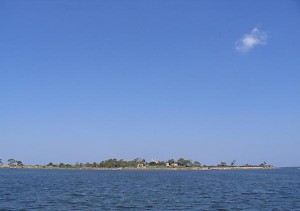
Politically, Motya was always part of the Phoenician and Carthaginian world, but culturally, it was open to every civilization it traded with, which explains a couple of objects in Egyptian style and many Greek artifacts.
The Cappiddazzu sanctuary belongs to the oldest parts of the town. First, it was a deposit for sacrificial offerings, which was overbuilt in the second half of the seventh century, and surrounded with a wall in c.550. There must have been a three-naved building too, which was completely destroyed but rebuilt in the fourth century. This temple, to an unknown deity, survived for centuries.
In the mid sixth-century, the town received its city walls too. This was the age in which Greek tyrants like Phalaris of Acragas started to build territorial states, and the construction of defensive works must have been the logical response.
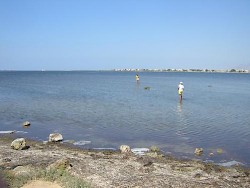
Today, it is hard to imagine that it was once a city, because a Greek army, commanded by Dionysius, the tyrant of Syracuse, sacked the city in 398 BCE (text). Even though the Carthaginians reconquered it. Lilybaeum now became the main Punic settlement in western Sicily, perhaps because its port was easier accessible than the lagoon of Motya and made navigation during a siege easier. The building materials from Motya were removed; only some wealthy farmers stayed on the island, living in beautiful houses, which were still in use in the Roman age.
One of the youngest structures is the Byzantine church that was built on the Cappiddazzu temple.
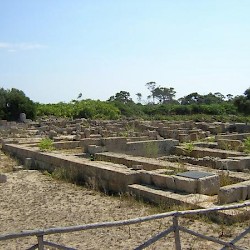 Motya, Cappiddazzu Sanctuary |
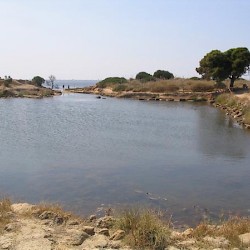 Motya, So-called Cothon |
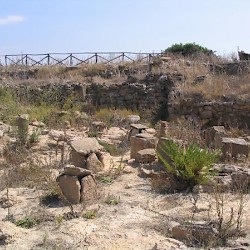 Motya, Necropolis |
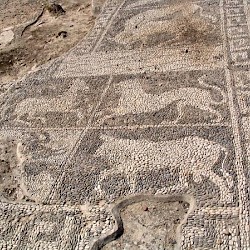 House of the Mosaics, mosaic of a bull and other animals |